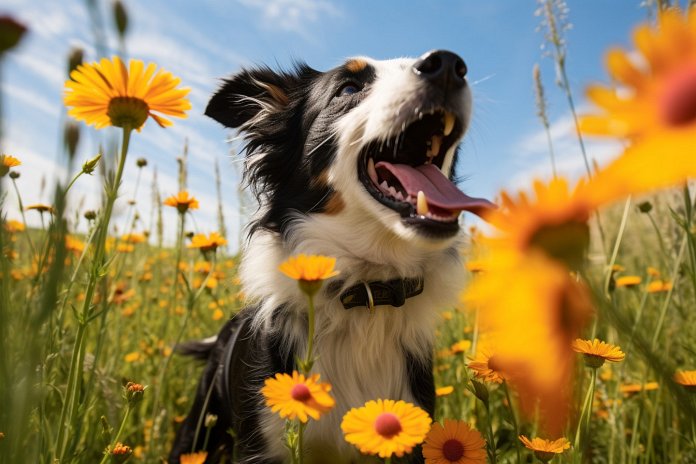
We all know that dogs have an incredible sense of smell, so it’s no surprise that they can sniff out a skunk before it sprays. But how can you tell if your dog has found a skunk? And how can you teach your dog to alert you without scaring the skunk? In this article, we’ll provide you with all the answers you need.
Signs Your Dog has Smelled a Skunk
When your dog smells a skunk, they will likely raise their nose in the air and try to get a better scent. They may also put their nose to the ground and follow a trail that only they can smell. Look out for pauses, lip licking, and excessive sniffing. If your dog has found a skunk, they may bounce around, jump, bark, growl, or whimper. They may paw at the ground, jump near the skunk, and bark excitedly. Just make sure they don’t get too close to avoid the skunk spray.
Body Language
Here are some body language cues to look out for:
– Alertness
– Barking
– Howling
– Sniffing
– Tongue flicking
– Whimpering
– Nose licking
– Wrinkled nose
Other Signs
Here are some additional cues to watch for:
– Excited behavior
– Chasing a scent trail you can’t smell or see
– Bouncing around
Historic Causes of Skunks Spraying Dogs
Skunks spray dogs as a defensive mechanism. If your dog startles a skunk, it will spray to protect itself. Skunks may also spray to warn off other creatures or claim territory.
The Science Behind Skunk Smell
Skunks emit a horrible smell as a defense because they are gentle, near-sighted animals with limited defensive moves. The smell is a sulfuric acid fired from their anal glands, which can burn and irritate your dog’s eyes if it comes into contact. Skunks will try to scare off predators by stomping their front feet first, but if your dog doesn’t back off, it will get sprayed.
Training Your Dog to Avoid Skunks
If you want to train your dog to avoid skunks, incorporate “fringing” into their hunting training. Fringing is a method that teaches dogs to hunt but stop before getting too close to the animal. This is crucial with skunks to prevent a spray. Use treats and skunk-scented toys to train your dog to track down the scent and give you a signal instead of approaching the skunk. Reward your dog with positive reinforcement when they learn to fringe correctly.
“Train your pup to seek out skunks without getting sprayed – learn the art of fringing!”

Tips & Things to Know
1️⃣ Look out for signs that your dog has smelled a skunk, such as raising their nose in the air, sniffing the ground, and exhibiting excited behavior like jumping and barking. These behaviors indicate that your dog has detected the skunk’s scent and wants to alert you to its presence.
2️⃣ Pay attention to your dog’s body language if you suspect they have sniffed out a skunk. Look for cues like alertness, barking, howling, sniffing, tongue flicking, whimpering, nose licking, and wrinkling of the nose. These behaviors can further confirm that your dog has detected a skunk.
3️⃣ Train your dog to “fringe” when encountering a skunk. Fringing is a method used by trainers to teach dogs to hunt something down without getting too close. By using treats and scent-based toys, train your dog to track down a skunk-scented toy and then give you a specified signal instead of getting too close to the skunk. This will prevent your dog from startling the skunk and getting sprayed.
Frequently Asked Questions, Answered ✅
1. Can dogs smell skunks before they spray?
– Yes, dogs with their superior sense of smell can detect the scent of skunks before they spray.
2. What are the signs that my dog has smelled a skunk?
– Signs include raising their nose in the air, sniffing the ground, pausing, lip licking, excessive sniffing, bouncing around, jumping, barking, growling, and whimpering.
3. What are the body language cues that indicate my dog has found a skunk?
– Alertness, barking, howling, sniffing, tongue flicking, whimpering, nose licking, and a wrinkled nose.
4. Why do skunks spray dogs?
– Skunks spray dogs as a defensive mechanism when they feel threatened or scared. Dogs that approach skunks too closely or startle them are likely to get sprayed.
5. How can I train my dog to detect skunks without getting sprayed?
– Fringe training can be used to teach your dog to track down the scent of a skunk without getting too close. This involves using treats and scent-based toys to train your dog to give you a specified signal instead of approaching the skunk directly. Positive reinforcement is essential in this training process.